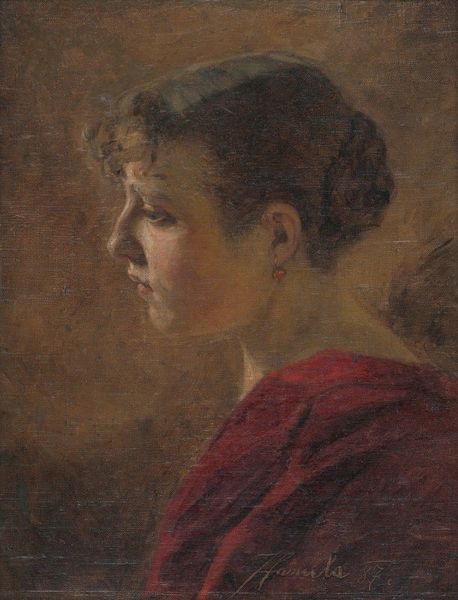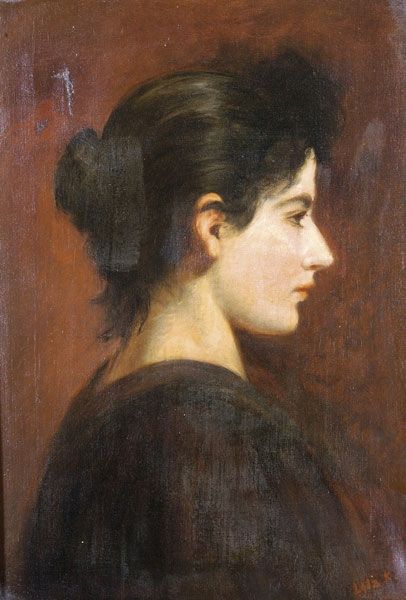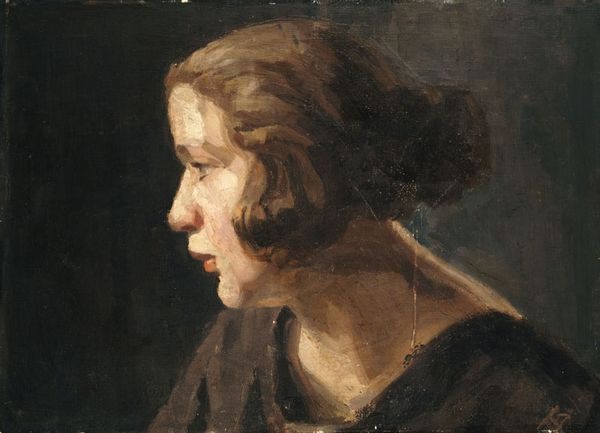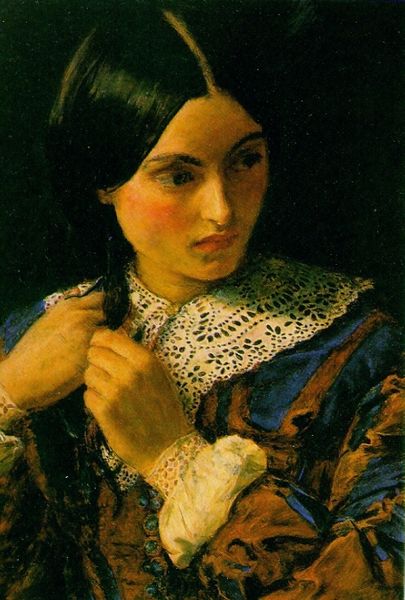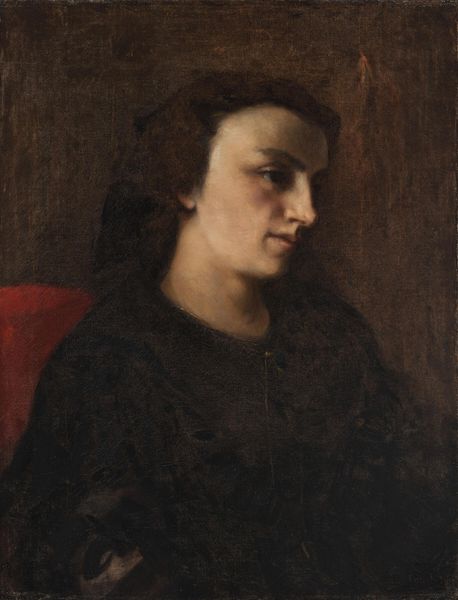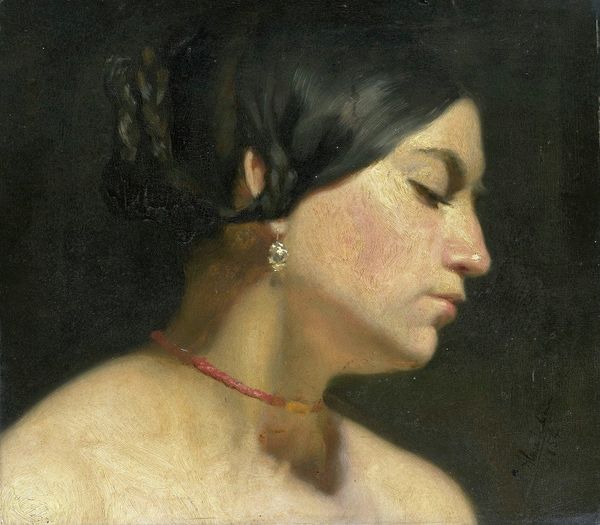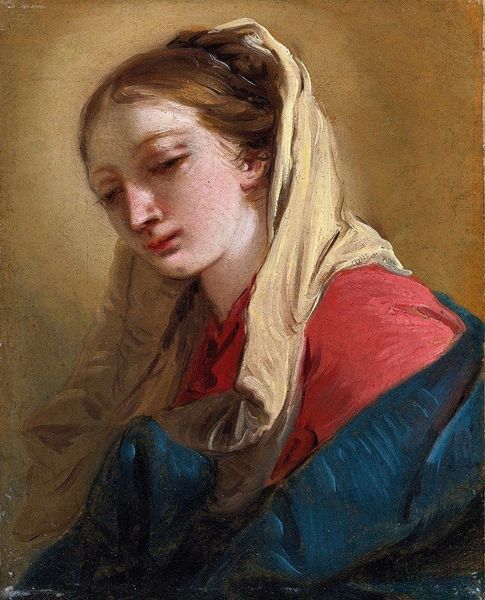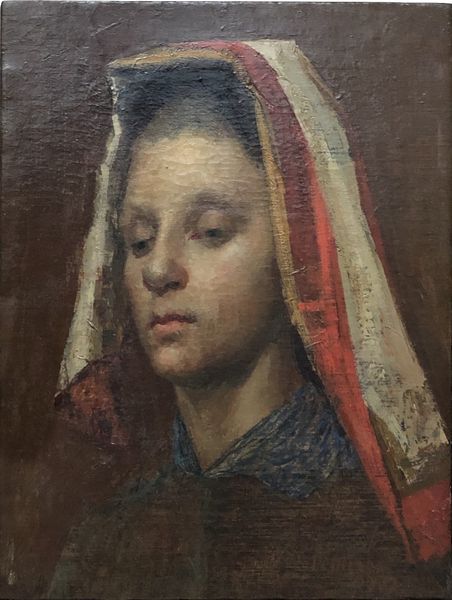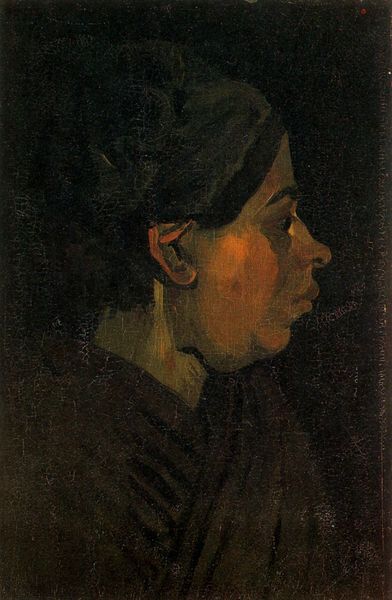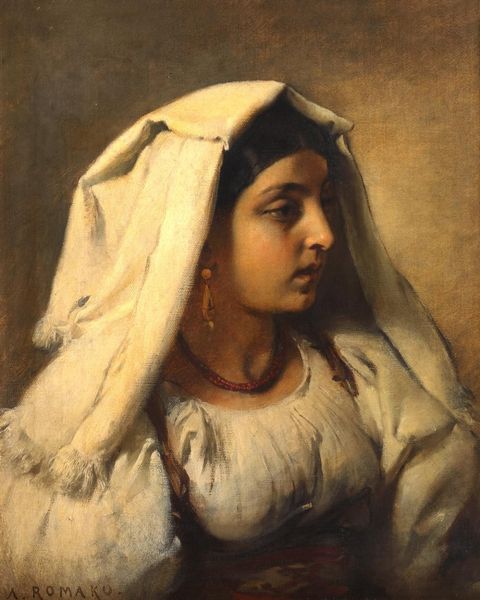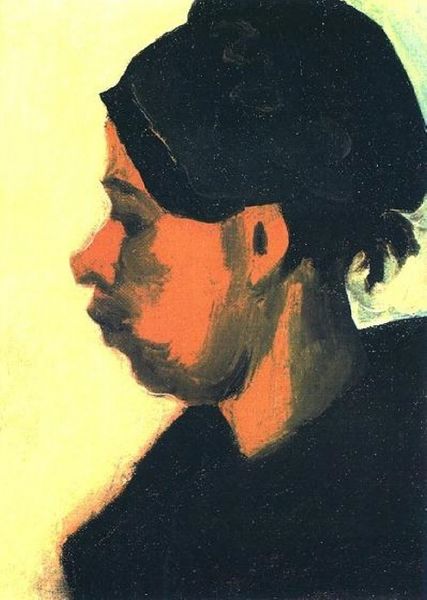
oil-paint
#
figurative
#
baroque
#
oil-paint
#
realism
Copyright: Public Domain: Artvee
Curator: The first impression is powerful. The profile is lit so gently, emerging from the darkness. Is she in contemplation, or just pausing? It’s intimate. Editor: Here we have Diego Velázquez's "Head of a Girl," painted sometime between 1620 and 1624. An oil painting, focusing with striking realism on the delicate features of a young woman. Curator: Realism yes, but the shadows dance around her face. They don’t flatten, but deepen the mystery. Baroque light and shadow, playing peek-a-boo with the girl's features. Does this invite the viewers to seek some clarity of inner truth that has been hidden? Editor: Exactly! Velázquez, even early in his career, was fascinated by representing the inner life through the external form. Also, think of the artistic conventions of his time. Portraiture was largely about conveying status and power. And with this kind of portraits Velázquez offers something so much more subtle. Curator: Right, it isn't just capturing her likeness, it is capturing her essence, right? Without the frills of nobility. I can almost hear her thoughts as if she were my sister. A quiet strength there... but vulnerable, like a hesitant bird that alights for just a split-second. Editor: Precisely. She represents everyday humanity. And perhaps, her clothing. It looks modest, unassuming, signaling her removal from that sphere of status. In this, he democratizes the artistic vision by making everydayness heroic, don't you think? Curator: Totally! In the end, it’s not just paint on canvas, it’s a breath caught in time, a gentle invitation to ponder our own fleeting beauty, before we get all tarted up and go all courtly on ourselves. Editor: That's it exactly. Velázquez captures, as always, the real heart of the matter in a world that prizes the appearance. So good!
Comments
No comments
Be the first to comment and join the conversation on the ultimate creative platform.

